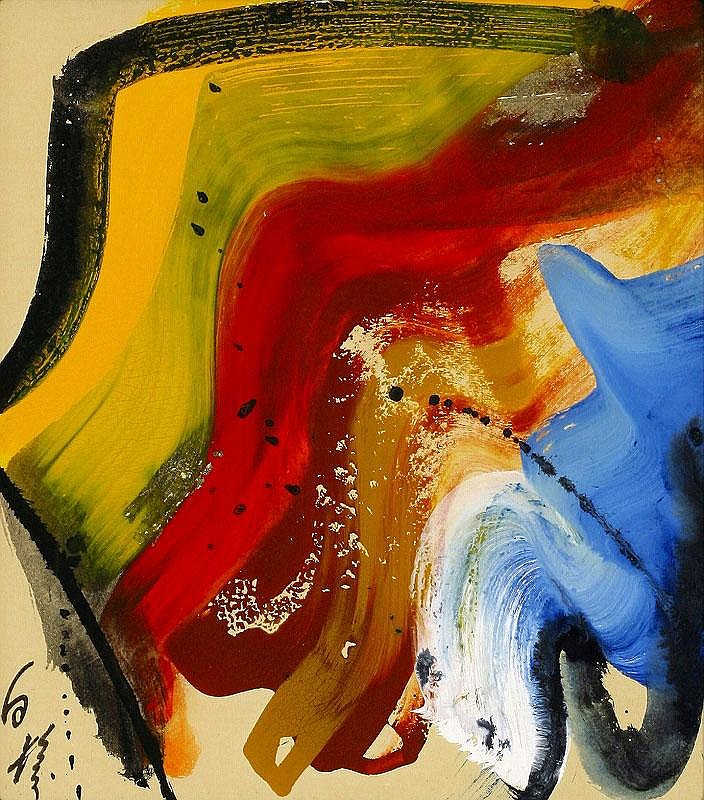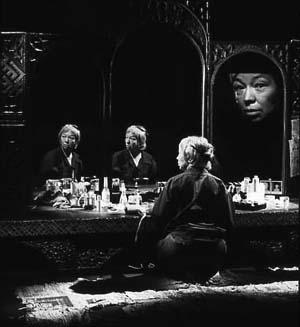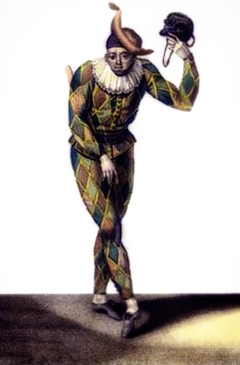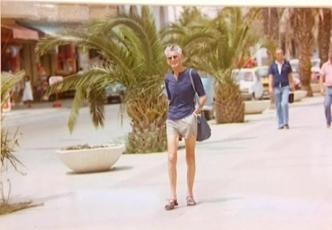
To The Editor of the “New Statesman”
Sir,
Will you allow me to draw your attention to the fact that in a review of a book by me (October ) your reviewer omitted to use the word Highbrow? The review, save for that omission, gave me so much pleasure that I am driven to ask you, at the risk of appearing unduly egotistical, whether your reviewer, a man of obvious intelligence, intended to deny my claim to that title? I say “claim,” for surely I may claim that title when a great critic, who is also a great novelist, a rare and enviable combination, always calls me a highbrow when he condescends to notice my work in a great newspaper; and, further, always finds space to inform not only myself, who know it already, but the whole British Empire, who hang on his words, that I live in Bloomsbury? Is your critic unaware of that fact too? Or does he, for all his intelligence, maintain that it is unnecessary in reviewing a book to add the postal address of the writer?
His answer to these questions, though of real value to me, is of no possible interest to the public at large. Of that I am well aware. But since larger issues are involved, since the Battle of the Brows troubles, I am told, the evening air, since the finest minds of our age have lately been engaged in debating, not without that passion which befits a noble cause, what a highbrow is and what a lowbrow, which is better and which is worse, may I take this opportunity to express my opinion and at the same time draw attention to certain aspects of the question which seem to me to have been unfortunately overlooked?
Now there can be no two opinions as to what a highbrow is. He is the man or woman of thoroughbred intelligence who rides his mind at a gallop across country in pursuit of an idea. That is why I have always been so proud to be called highbrow. That is why, if I could be more of a highbrow I would. I honour and respect highbrows. Some of my relations have been highbrows; and some, but by no means all, of my friends. To be a highbrow, a complete and representative highbrow, a highbrow like Shakespeare, Dickens, Byron, Shelley, Keats, Charlotte Bronte, Scott, Jane Austen, Flaubert, Hardy or Henry James — to name a few highbrows from the same profession chosen at random — is of course beyond the wildest dreams of my imagination. And, though I would cheerfully lay myself down in the dust and kiss the print of their feet, no person of sense will deny that this passionate preoccupation of theirs — riding across country in pursuit of ideas — often leads to disaster. Undoubtedly, they come fearful croppers. Take Shelley — what a mess he made of his life! And Byron, getting into bed with first one woman and then with another and dying in the mud at Missolonghi. Look at Keats, loving poetry and Fanny Brawne so intemperately that he pined and died of consumption at the age of twenty-six. Charlotte Bronte again — I have beep assured on good authority that Charlotte Bronte was, with the possible exception of Emily, the worst governess in the British Isles. Then there was Scott — he went bankrupt, and left, together with a few magnificent novels, one house, Abbotsford, which is perhaps the ugliest in the whole Empire. But surely these instances are enough — I need not further labour the point that highbrows, for some reason or another, are wholly incapable of dealing successfully with what is called real life. That is why, and here I come to a point that is often surprisingly ignored, they honour so wholeheartedly and depend so completely upon those who are called lowbrows. By a lowbrow is meant of course a man or a woman of thoroughbred vitality who rides his body in pursuit of a living at a gallop across life. That is why I honour and respect lowbrows — and I have never known a highbrow who did not. In so far as I am a highbrow (and my imperfections in that line are well known to me) I love lowbrows; I study them; I always sit next the conductor in an omnibus and try to get him to tell me what it is like — being a conductor. In whatever company I am I always try to know what it is like — being a conductor, being a woman with ten children and thirty-five shillings a week, being a stockbroker, being an admiral, being a bank clerk, being a dressmaker, being a duchess, being a miner, being a cook, being a prostitute. All that lowbrows do is of surpassing interest and wonder to me, because, in so far as I am a highbrow, I cannot do things myself.
This brings me to another point which is also surprisingly overlooked. Lowbrows need highbrows and honour them just as much as highbrows need lowbrows and honour them. This too is not a matter that requires much demonstration. You have only to stroll along the Strand on a wet winter’s night and watch the crowds lining up to get into the movies. These lowbrows are waiting, after the day’s work, in the rain, sometimes for hours, to get into the cheap seats and sit in hot theatres in order to see what their lives look like. Since they are lowbrows, engaged magnificently and adventurously in riding full tilt from one end of life to the other in pursuit of a living, they cannot see themselves doing it. Yet nothing interests them more. Nothing matters to them more. It is one of the prime necessities of life to them — to be shown what life looks like. And the highbrows, of course, are the only people who can show them. Since they are the only people who do not do things, they are the only people who can see things being done. This is so — and so it is I am certain; nevertheless we are told — the air buzzes with it by night, the press booms with it by day, the very donkeys in the fields do nothing but bray it, the very curs in the streets do nothing but bark it —“Highbrows hate lowbrows! Lowbrows hate highbrows!”— when highbrows need lowbrows, when lowbrows need highbrows, when they cannot exist apart, when one is the complement and other side of the other! How has such a lie come into existence? Who has set this malicious gossip afloat?
There can be no doubt about that either. It is the doing of the middlebrows. They are the people, I confess, that I seldom regard with entire cordiality. They are the go-betweens; they are the busy-bodies who run from one to the other with their tittle tattle and make all the mischief — the middlebrows, I repeat. But what, you may ask, is a middlebrow? And that, to tell the truth, is no easy question to answer. They are neither one thing nor the other. They are not highbrows, whose brows are high; nor lowbrows, whose brows are low. Their brows are betwixt and between. They do not live in Bloomsbury which is on high ground; nor in Chelsea, which is on low ground. Since they must live somewhere presumably, they live perhaps in South Kensington, which is betwixt and between. The middlebrow is the man, or woman, of middlebred intelligence who ambles and saunters now on this side of the hedge, now on that, in pursuit of no single object, neither art itself nor life itself, but both mixed indistinguishably, and rather nastily, with money, fame, power, or prestige. The middlebrow curries favour with both sides equally. He goes to the lowbrows and tells them that while he is not quite one of them, he is almost their friend. Next moment he rings up the highbrows and asks them with equal geniality whether he may not come to tea. Now there are highbrows — I myself have known duchesses who were highbrows, also charwomen, and they have both told me with that vigour of language which so often unites the aristocracy with the working classes, that they would rather sit in the coal cellar, together, than in the drawing-room with middlebrows and pour out tea. I have myself been asked — but may I, for the sake of brevity, cast this scene which is only partly fictitious, into the form of fiction? — I myself, then, have been asked to come and “see” them — how strange a passion theirs is for being “seen”! They ring me up, therefore, at about eleven in the morning, and ask me to come to tea. I go to my wardrobe and consider, rather lugubriously, what is the right thing to wear? We highbrows may be smart, or we may be shabby; but we never have the right thing to wear. I proceed to ask next: What is the right thing to say? Which is the right knife to use? What is the right book to praise? All these are things I do not know for myself. We highbrows read what we like and do what we like and praise what we like. We also know what we dislike — for example, thin bread and butter tea. The difficulty of eating thin bread and butter in white kid gloves has always seemed to me one of life’s more insuperable problems. Then I dislike bound volumes of the classics behind plate glass. Then I distrust people who call both Shakespeare and Wordsworth equally “Bill”— it is a habit moreover that leads to confusion. And in the matter of clothes, I like people either to dress very well; or to dress very badly; I dislike the correct thing in clothes. Then there is the question of games. Being a highbrow I do not play them. But I love watching people play who have a passion for games. These middlebrows pat balls about; they poke their bats and muff their catches at cricket. And when poor Middlebrow mounts on horseback and that animal breaks into a canter, to me there is no sadder sight in all Rotten Row. To put it in a nutshell (in order to get on with the story) that tea party was not wholly a success, nor altogether a failure; for Middlebrow, who writes, following me to the door, clapped me briskly on the back, and said “I’m sending you my book!” (Or did he call it “stuff?”) And his book comes — sure enough, though called, so symbolically, Keepaway, [Keepaway is the name of a preparation used to distract the male dog from the female at certain seasons] it comes. And I read a page here, and I read a page there (I am breakfasting, as usual, in bed). And it is not well written; nor is it badly written. It is not proper, nor is it improper — in short it is betwixt and between. Now if there is any sort of book for which I have, perhaps, an imperfect sympathy, it is the betwixt and between. And so, though I suffer from the gout of a morning — but if one’s ancestors for two or three centuries have tumbled into bed dead drunk one has deserved a touch of that malady — I rise. I dress. I proceed weakly to the window. I take that book in my swollen right hand and toss it gently over the hedge into the field. The hungry sheep — did I remember to say that this part of the story takes place in the country? — the hungry sheep look up but are not fed.
But to have done with fiction and its tendency to lapse into poetry — I will now report a perfectly prosaic conversation in words of one syllable. I often ask my friends the lowbrows, over our muffins and honey, why it is that while we, the highbrows, never buy a middlebrow book, or go to a middlebrow lecture, or read, unless we are paid for doing so, a middlebrow review, they, on the contrary, take these middlebrow activities so seriously? Why, I ask (not of course on the wireless), are you so damnably modest? Do you think that a description of your lives, as they are, is too sordid and too mean to be beautiful? Is that why you prefer the middlebrow version of what they have the impudence to call real humanity? — this mixture of geniality and sentiment stuck together with a sticky slime of calves-foot jelly? The truth, if you would only believe it, is much more beautiful than any lie. Then again, I continue, how can you let the middlebrows teach you how to write? — you, who write so beautifully when you write naturally, that I would give both my hands to write as you do — for which reason I never attempt it, but do my best to learn the art of writing as a highbrow should. And again, I press on, brandishing a muffin on the point of a tea spoon, how dare the middlebrows teach you how to read — Shakespeare for instance? All you have to do is to read him. The Cambridge edition is both good and cheap. If you find Hamlet difficult, ask him to tea. He is a highbrow. Ask Ophelia to meet him. She is a lowbrow. Talk to them, as you talk to me, and you will know more about Shakespeare than all the middlebrows in the world can teach you — I do not think, by the way, from certain phrases that Shakespeare liked middlebrows, or Pope either.
To all this the lowbrows reply — but I cannot imitate their style of talking — that they consider themselves to be common people without education. It is very kind of the middlebrows to try to teach them culture. And after all, the lowbrows continue, middlebrows, like other people, have to make money. There must be money in teaching and in writing books about Shakespeare. We all have to earn our livings nowadays, my friends the lowbrows remind me. I quite agree. Even those of us whose Aunts came a cropper riding in India and left them an annual income of four hundred and rfifty pounds, now reduced, thanks to the war and other luxuries, to little more than two hundred odd, even we have to do that. And we do it, too, by writing about anybody who seems amusing — enough has been written about Shakespeare — Shakespeare hardly pays. We highbrows, I agree, have to earn our livings; but when we have earned enough to live on, then we live. When the middlebrows, on the contrary, have earned enough to live on, they go on earning enough to buy — what are the things that middlebrows always buy? Queen Anne furniture (faked, but none the less expensive); first editions of dead writers, always the worst; pictures, or reproductions from pictures, by dead painters; houses in what is called “the Georgian style”— but never anything new, never a picture by a living painter, or a chair by a living carpenter, or books by living writers, for to buy living art requires living taste. And, as that kind of art and that kind of taste are what middlebrows call “highbrow,” “Bloomsbury,” poor middlebrow spends vast sums on sham antiques, and has to keep at it scribbling away, year in, year out, while we highbrows ring each other up, and are off for a day’s jaunt into the country. That is the worst of course of living in a set — one likes being with one’s friends.
Have I then made my point clear, sir, that the true battle in my opinion lies not between highbrow and lowbrow, but between highbrows and lowbrows joined together in blood brotherhood against the bloodless and pernicious pest who comes between? If the B.B.C. stood for anything but the Betwixt and Between Company they would use their control of the air not to stir strife between brothers, but to broadcast the fact that highbrows and lowbrows must band together to exterminate a pest which is the bane of all thinking and living. It may be, to quote from your advertisement columns, that “terrifically sensitive” lady novelists overestimate the dampness and dinginess of this fungoid growth. But all I can say is that when, lapsing into that stream which people call, so oddly, consciousness, and gathering wool from the sheep that have been mentioned above, I ramble round my garden in the suburbs, middlebrow seems to me to be everywhere. “What’s that?” I cry. “Middlebrow on the cabbages? Middlebrow infecting that poor old sheep? And what about the moon?” I look up and, behold, the moon is under eclipse. “Middlebrow at it again!” I exclaim. “Middlebrow obscuring, dulling, tarnishing and coarsening even the silver edge of Heaven’s own scythe.” (I “draw near to poetry,” see advt.) And then my thoughts, as Freud assures us thoughts will do, rush (Middlebrow’s saunter and simper, out of respect for the Censor) to sex, and I ask of the sea-gulls who are crying on desolate sea sands and of the farm hands who are coming home rather drunk to their wives, what will become of us, men and women, if Middlwbrow has his way with us, and there is only a middle sex but no husbands or wives? The next remark I address with the utmost humility to the Prime Minister. “What, sir,” I demand, “will be the fate of the British Empire and of our Dominions Across the Seas if Middlebrows prevail? Will you not, sir, read a pronouncement of an authoritative nature from Broadcasting House?”
Such are the thoughts, such are the fancies that visit “cultured invalidish ladies with private means” (see advt.) when they stroll in their suburban gardens and look at the cabbages and at the red brick villas that have been built by middlebrows so that middlebrows may look at the view. Such are the thoughts “at once gay and tragic and deeply feminine” (see advt.) of one who has not yet “been driven out of Bloomsbury” (advt. again), a place where lowbrows and highbrows live happily together on equal terms and priests are not, nor priestesses, and, to be quite frank, the adjective “priestly” is neither often heard nor held in high esteem. Such are the thoughts of one who will stay in Bloomsbury until the Duke of Bedford, rightly concerned for the respectability of his squares, raises the rent so high that Bloomsbury is safe for middlebrows to live in. Then she will leave.
May I conclude, as I began, by thanking your reviewer for his very courteous and interesting review, but may I tell him that though he did not, for reasons best known to himself, call me a highbrow, there is no name in the world that I prefer? I ask nothing better than that all reviewers, for ever, and everywhere, should call me a highbrow. I will do my best to oblige them. If they like to add Bloomsbury, W.C.1, that is the correct postal address, and my telephone number is in the Directory. But if your reviewer, or any other reviewer, dares hint that I live in South Kensington, I will sue him for libel. If any human being, man, woman, dog, cat or half-crushed worm dares call me “middlebrow” I will take my pen and stab him, dead. Yours etc.,
Virginia Woolf.














